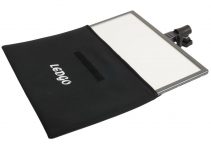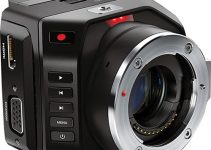In the early days of DSLR revolution, color grading was not such a common word as you may think. Indeed, higher budget productions had been working for decades with digital color correction, but at the time most cameras used to shoot in a compressed format and a colorist software was beyond expensive.
Most editing software had little tools for grading, and we tried to make to most out of it. Fast forward to today and the situation has improved massively. Most NLEs have color panels that go beyond basic, the most renowned color correction software has a free license, and almost all cameras have some kind of flavor of Log file.
Be it S-Log2 or 3, F-log, V-log, you name it, it’s easy to get one of these files, but they come at a price. A log image is almost painful to watch if not graded. Let’s take a look at how to grade quickly Sony’s offerings of log files, Cine4, S-log and HLG with Sidney Diongzon.
We’re going to start with Cine4. But a quick intro first: some of the most useful tools you can have when grading are the scopes. In this case, we are watching the RGB Parade scope, and what this window does is showing you the three RGB components (Red, Green and Blue) with a numeric value from 0 to 100 corresponding to the luminance on the Y axis. Another useful scope we’ll see later is the vectorscope, and that will be useful to work on skin tones.
In this case, working in Premiere Pro’s Lumetri panel we will be using the Basic Correction, Curves Color Wheels & Match, and HSL. So, off with the first shot, a Cine4 one. From the Color wheels (highlighted in red in the photo) we can stretch a little bit the image, in this case lowering shadows and highlights. Here is when you should keep watching the scopes in order to avoid clipping.
Once we’ve taken care of luminance, we can go to Basic Correction. Diongzon suggests avoiding operating on white balance and exposure because they mess up the grade.
The whole idea in the basic tab is to bring up the colors from the image, dial in all the information that already is inside the clip, that is always keeping an eye on the scopes, so that the parade is nicely stretched on the whole area, as said, avoiding to touch the extremes of the graph. The curves section instead will help us to give a little pop to image, try to get a slight S-curve to give back in some contrast.
A very useful addition in the latest versions of Premiere Pro has been the upgrading of the match tools in Lumetri Color. You’ll notice that we have a series of new eyedroppers and curves. If you head down to the last one, Sat vs Sat, you can easily change saturation values in a very granular way.
Maybe just in the shadows, or maybe giving two different inputs for shadows and highlights. Heading down to HSL we go for a cool one. In the “Key” dropdown menu we get an eyedropper that allows to pick up specific tonal ranges in the image, like for example skin tones, and apply corrections only on that range.
Maybe your talent has too much magenta in their skin, or too much yellow. You can intervene and adjust just for that specific tint! It is an incredibly useful feature to have, and refining the selection is easy as picking up with the eyedropper labeled with the + sign.
To finish off blur a little bit the selection so that the edges are not too rough and the grading mixes seamlessly in the rest of the image. Ticking the color/gray box allows to see the mask highlighting the tones selected, and we must say, it is a kind of scary image we get down there!
The principle of the workflow stays the same if you switch to an S-log file. The idea is always to stretch the image in the scopes and let the color pop up playing with saturation. That will give you a nice, crisp and colorful image. Switching to the HLG file we hit the sweet spot.
This file seems to be the best compromise between S-log and Cine4. You get the high dynamic range of S-log, but you don’t need to expose far in high tonal range as you do usually. For this kind of file, most of the correction can be done from the Basic Correction Tab. Adjusting contrast, saturation and highlights are more or less what you need to do. As always take a look at the skin tone and pick it up in the HSL tab to correct it. Keeping one eye on the vectorscope helps to nail it down correctly.
All in all, here you get a quick set of techniques that can rapidly increase the quality of your shots, and most of all adjust your talent skin tones giving you a nice and pleasant image without those weird tints.
[source: Sidney Diongzon]
Disclaimer: As an Amazon Associate partner and participant in B&H and Adorama Affiliate programmes, we earn a small comission from each purchase made through the affiliate links listed above at no additional cost to you.




